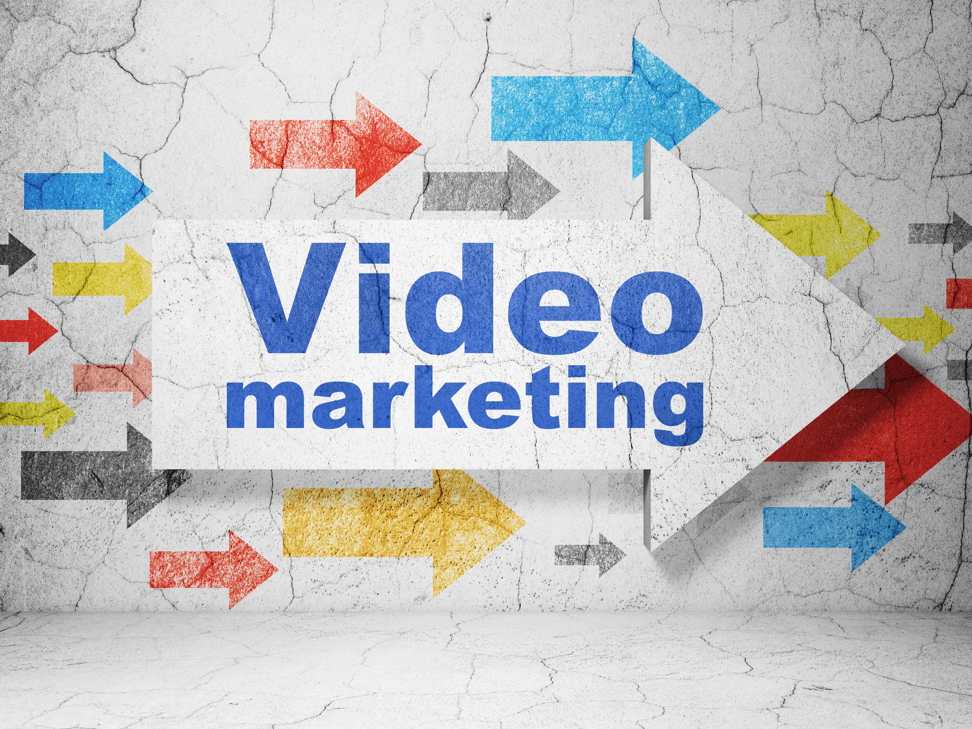Using video as part of your digital marketing plan isn’t a novel idea. In fact, brands and businesses have been using video for decades. Have you heard of these fancy things called commercials?
The difference is, using video as part of your marketing program is no longer a luxury: it’s a necessity.
The Importance of Video Marketing
Take a quick scroll through your social media feeds. Now check out a few business websites, such as your favorite brand. Notice something? Almost everyone is using video marketing in some fashion.
According to IMPACT, 82 percent of marketing professionals find video to be an effective tool for their digital marketing strategy. Businesses using video are able to stand out from the competition and attract the attention of the right audience. Video marketing is easily the most influential and important marketing tactic of this decade.
To provide further context, let’s look at some additional video marketing stats according to Hubspot and IMPACT:
- Embedding video on websites has the ability to drive traffic up by 55 percent.
- 85 percent of businesses have internal staff and/or resources to produce video.
- 43 percent of people want to see more video content from marketers.
- 55 percent of people consume videos thoroughly — the highest amount of all content types.
Are you convinced? Good. Let’s discuss how to properly use video in your digital marketing strategy.
Video Marketing Best Practices
Before you press the record button, it’s best to understand how to effectively produce and use video within your marketing strategy. Follow these best practices for the top results:
Have a Plan — It’s not enough to quickly shoot a last-minute video on your smartphone. Your digital marketing strategy requires professionally-produced videos to achieve specific goals. To begin, ask yourself, “What am I trying to accomplish with this video?” Popular answers include:
- To increase product sales
- To generate awareness for my brand
- To build a community of loyal fans
- To improve my social media engagement and overall metrics
From there, use your individual answer to devise a plan for filming, editing, and distributing your video. Keep in mind that your audience will know the difference between a well-produced video and one hastily put together.
Location — Creating a setting for your video is just as important as finding the right message. You want your video to not only sound professional, but also look professional. It’s important to be aware of the background and the surrounding areas that will be in the frame of your video. Choose a location that is quiet and secluded with great lighting. Stay away from anything that would be too distracting and keep your audience from hearing your message.
Hire a Professional or Outsource Your Video Necessities — If you’re planning to use video in your marketing strategy (which you should), it is in your best interest to utilize the talents of a professional videographer. Quality videos are of the utmost importance, whether that means hiring a video professional to be in-house or outsourcing your projects to an agency. In today’s digital marketplace, it’s not hard to identify which brands take their video marketing content seriously and which still do not understand the importance.
Always Have a Story — Video marketing is the perfect storytelling platform. No matter if you’re using video to sell a product, bring awareness to your brand, or simply reach a specific audience, you need a story. Otherwise, what’s the point of producing the video in the first place? Why should your audience watch the video? A story is a way to compel an audience and retain their attention.
How to Use Video Marketing
Once you’ve produced this amazing piece of video content, what do you do with it? While it all boils down to your initial goal for the video, here are some common ways and places to use video within a marketing strategy:
- An “About” or “Introduction” video on your website explaining your mission and vision
- As part of an ongoing social media content series
- Within sales pages for a lead generation campaign
- As part of the client onboarding process for B2B businesses
- To provide quality content to users and increase SEO rankings
- Customer testimonials
- Create a more detailed video based off blog content
- Hold a live Q&A
The possibilities for video marketing are virtually endless. From YouTube series to new product announcements, you can use video throughout your entire digital marketing strategy. Remember to have a defined goal and process for your video marketing efforts for the best overall results.
Why Use Video in Your Marketing Strategy?
Higher Engagement — I’m sure you’ve heard it before; visual content is the key to increasing engagement, and video should be your go to. But, did you know according to the Content Marketing Institute users are 10 times more likely to engage, share, and comment on video content, than blogs and other related posts. Video is eye catching and has the ability to keep your audience’s attention longer, therefore increasing your engagement.
Builds Trust — Building trust and creating long-term relationships should be your number one goal as a business owner, and using video in your marketing strategy can help you achieve this. You are more likely to increase engagement with your users and give them more confidence in yourself and the services you provide by using video. Being able to put a face to a name allows your users to connect with you in a way that they couldn’t before.
Improve SEO Ranking — Adding video to your website can help increase the time a user spends on your site. Having longer exposure helps build trust and shows search engines that you are producing good content. So, by incorporating video in your marketing strategy you help the chance of increasing your search ranking and overall exposure.
Mobile Friendly — Today many consumers use their mobile device for everything so it’s important that your marketing strategy is also mobile friendly. Video is great for mobile, and allows your users to connect with you easily even when they’re on the go. You also have the potential to grow your audience since the number of smartphone users continues to grow.
It’s simple: Companies that use videos in their marketing grow revenue 49 percent faster year-on-year than those that don’t (Aberdeen Group, 2015). So, the question becomes, “Why aren’t you using video in your marketing strategy?”


